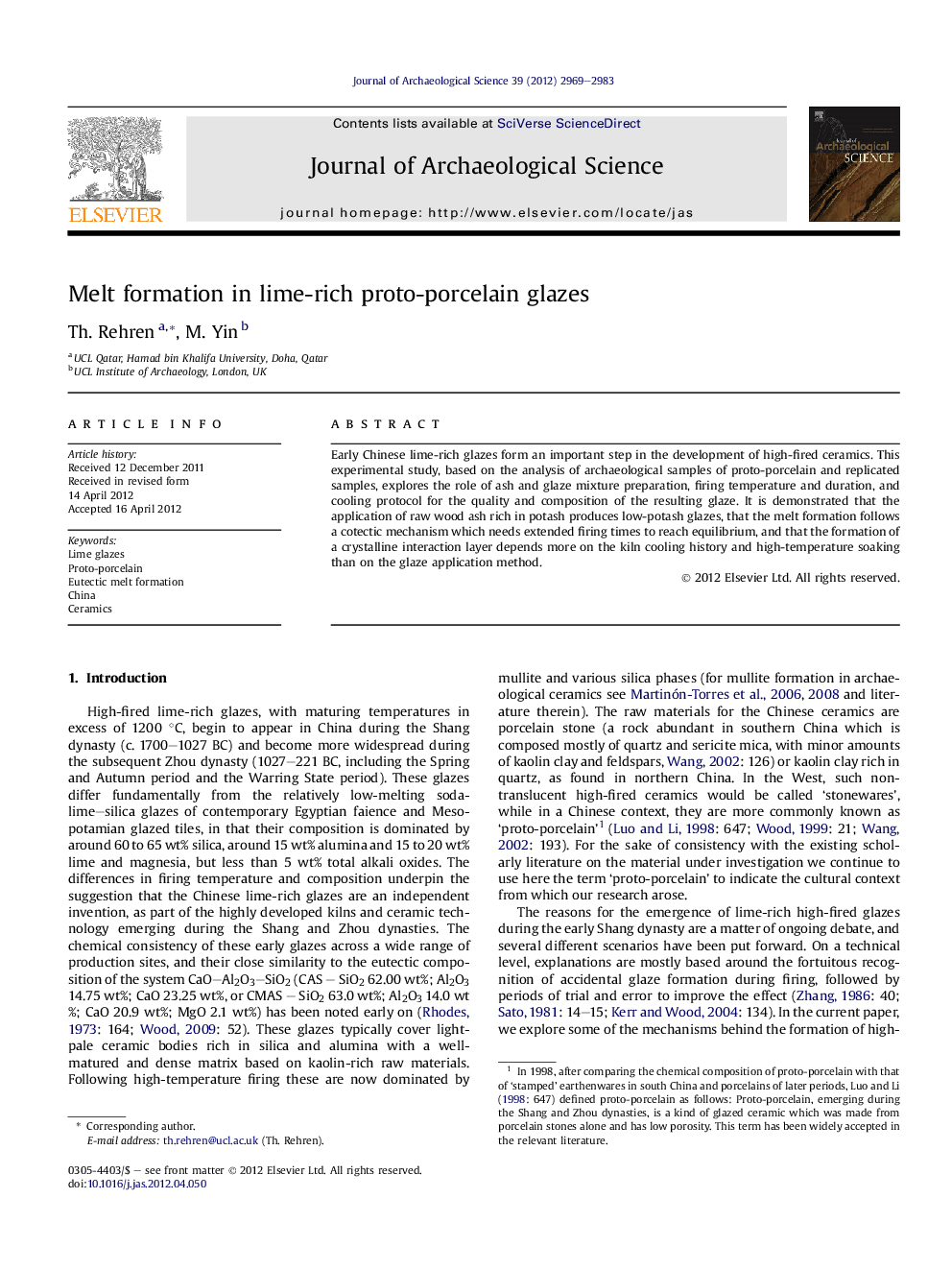| Article ID | Journal | Published Year | Pages | File Type |
|---|---|---|---|---|
| 1035799 | Journal of Archaeological Science | 2012 | 15 Pages |
Early Chinese lime-rich glazes form an important step in the development of high-fired ceramics. This experimental study, based on the analysis of archaeological samples of proto-porcelain and replicated samples, explores the role of ash and glaze mixture preparation, firing temperature and duration, and cooling protocol for the quality and composition of the resulting glaze. It is demonstrated that the application of raw wood ash rich in potash produces low-potash glazes, that the melt formation follows a cotectic mechanism which needs extended firing times to reach equilibrium, and that the formation of a crystalline interaction layer depends more on the kiln cooling history and high-temperature soaking than on the glaze application method.
Graphical abstractFigure optionsDownload full-size imageDownload high-quality image (206 K)Download as PowerPoint slideHighlights► Lime-rich glazes form during a eutectic melting process, depending on firing temperature. ► Potash content is much lower than in raw materials, due to evaporation during firing. ► Extended firing times are necessary to produce fully-formed glazes. ► Crystalline interaction layer between body and glaze is due to delayed cooling.
